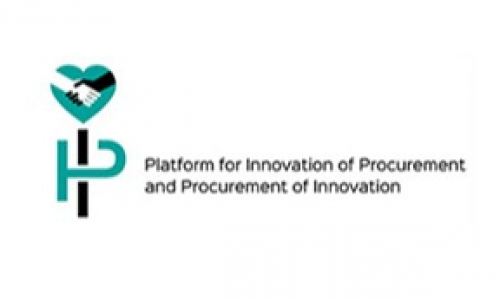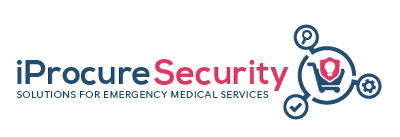76Projects
Help to improve our database
We are continuously collecting information related to the Emergency Medical Services in Europe. Help us improve our content and fill out the online form.
If you are not able to find what you are looking for, please let us know by sending us a message through our contact page.
Your feedback is important for us and it will be fed into our Database for EMS courses.
Open project form
Platform for Innovation of Procurement and Procurement of Innovation
- Funding: H2020
- From: 2018-12-01 to 2021-11-30
Description
A consortium of seven leading European university hospitals, coordinated by Karolinska University Hospital in Sweden, will join efforts to innovate procurement of digital health and care services. The project will engage all stakeholders, such as hospitals, developers, industrial partners, medical researchers and health professionals as well as patients, in order to address unmet needs in hospital services and develop methods for procurement of innovation. The project is funded by Horizon2020, the European Union research framework program. It kicked-off during the first project meeting in Vienna on December 3rd, 2018, and will run until 2021.

Arrhythmias monitoring and comprehensive care
- Funding: H2020
- From: 2016-11-01 to 2021-07-31
Description
A consortium of hospitals that is preparing a PPI to procure innovative solutions for the treatment of elderly patients with arrhythmias. This includes a support center for remote monitoring of pacemakers, delivering pre-defined information sets to all stakeholders in the care path, integration and quality labelling of vital signs home monitoring devices and wearables and support for patient activation.

Sustainable Technology for Older People – Get Organised
- Funding: CIP
- From: 2016-04-01 to 2018-03-31
Description
STOPandGO will identify the PPI benefits of STOPandGO for industry and the localities throughout the process in relation to the situation before. By adopting an innovative procurement approach the PPI Pilot will show that the benefits identified in the the Whole System Demonstrator(WSD) can be translated from small populations (our pilots represent about 10% of a regional target population) to wider ones, providing for scale uptake of technology and proportional reductions in the pressure on services. The project will also show that this approach can be applied across the EU and the Dissemination Work Package.

Mapping Interoperable EU PPDR Broadband Communication Applications and Technology
- Funding: H2020
- From: 2016-05-01 to 2017-04-30
Description
The BROADMAP project will take the first steps towards future procurement of ‘interoperable next generation of broadband radio communication systems for public safety and security’ (DRS-18) to improve PPDR’s service to Europe’s citizens and enhance interoperability across borders. The primary goal of this project is to collect and validate the PPDR (Public Protection and Disaster Relief) organisations’ existing requirements with the aim to establish a core set of specifications, and roadmap for procurement, to achieve future evolution of EU broadband applications and interoperable radio communication solutions

European Network Of CBRN TraIning CEnters (eNOTICE)
- Funding: H2020
- From: 2017-09-01 to 2022-08-31
Description
The overall goal of the eNOTICE project is to establish a European network of CBRN training, testing and demonstration centres aiming at enhancing CBRN training capacity for improved preparedness and incident response through increased collaboration between CBRN training centres and practitioners’ needs-driven CBRN innovation and research.

Commercialization of simulator for interventional echocardiography, specializing in the field of minimally invasive medical therapies. (TEEMothyTS Simulator)
- Funding: H2020
- From: 2019-09-01 to 2020-02-29
Description
Transoesophageal echocardiography (TEE) is a minimally invasive procedure used to assess the structure and function of the heart. Unlike a standard echocardiogram, the echo transducer is attached to a thin tube that is passed through the mouth into the oesophagus to yield very clear images of the heart. Despite its minimal invasiveness, TEE requires a highly skilled operator with detailed anatomical and clinical knowledge of the heart. Patient discomfort is not uncommon. TEEMothyTS Simulator has developed a cost-effective simulator to enhance training and effective use while minimising patient discomfort. The solution can use CT data from real patients with numerous pathologies for a broad repertoire of realistic medical situations. Its commercialisation should benefit physicians and patients alike.

Real Organ Generation (ROG)
- Funding: FP7
- From: 2019-12-01 to 2020-05-31
Description
The EU-funded ROG project provides support to Italian company MTM S.r.l for the development of a platform that includes an algorithm capturing 2D images and converting them into 3D forms in order to generate realistic organ models. This platform could be used in virtual reality applications and 3D printing, enabling an advanced medical training approach, as well as to simulate real patient conditions during a pre-operative trial in the healthcare environment. In the future, this platform will help to recognise anomalies, tagging mutations and morphology aberrations, enabling a novel approach to training specialists during critical preparation for surgery. The current stage of the project is dedicated to the development of a detailed business model.

EndoTrainer - A revolution in non-invasive surgery training
- Funding: FP7
- From: 2018-06-01 to 2018-11-30
Description
Minimally invasive surgery (MIS), or ‘key-hole surgery’, has huge benefits for patients and the healthcare system alike. However, its adoption is not as wide spread as it should be and today´s complex procedures can lead to a set of surgery mistakes generating unforseen patient harm and complicaton. One of the main reasons for the restrain on this full-release of MIS benefit has been due to the traditional, limited practical training. Students are taught the practicalities in real operating theatres with previously qualified surgeons. The environment is very costly and provides limited time for repeat practice. There are real bottlenecks in the supply of new, fully-capable MIS specialist surgeons. Surgitrainer developed the world’s first MIS simulator combining a realistic physical simulation with a virtual one. Trainees can practice at low cost, whilst having their progress precisely monitored and evaluated multiple times prior to their first ‘real’ procedure. This initiative aims to speed up the generation of qualified MIS surgeons and help to ensure that many more people obtain the vast benefits of these procedures.

TOXI-triage
- Funding: H2020
- From: 2015-09-01 to 2019-09-30
Description
The seven specific objectives of TOXI-triage address the operational; technological; ethical and societal dimensions of CBRN response and recovery, and importantly the economic base from which sustainable CBRN and multi-use systems are derived.
19 partners in 4 Task forces will deliver 9 Work Packages (WPs) that address: end user specifications; Design and delivery; Test and Validation; and, Impact. The approach defines a concept of operations that envisages accelerated delivery of situational awareness through an ensemble of embedded sensors, drones, standoff detectors (including cameras), artificial intelligence for processing sensor signals and web-traffic from social media, and centralised command and control. Wireless traceability of casualties provides dynamic mapping including medical care. 2 field exercises are intended to test and verify the operational attributes of the systems, and 3 WPs focus on impact to deliver: Exploitation; Security and Ethics; and Effective Innovation Management.

ETIMan: Emergency and Triage Information Manager, disrupting the Emergency Medicine industry
- Funding: H2020
- From: 2019-08-01 to 2020-01-31
Description
During mass casualties’ incidents (MCI), emergency staff, medical teams and operators must make quick decisions depending on the information they have. Triage – a selection of patients according to the urgency of help – is one of the most difficult complex tasks. The EU-funded ETIMan project will offer a digital mobile tool for MCI emergency staff to make their job easier. Data will be sent rapidly to MCI headquarters and hospitals. It will help to track patients on their way to treatment and reduce administrative work by sending combined data on paper and radio to minimise errors.

